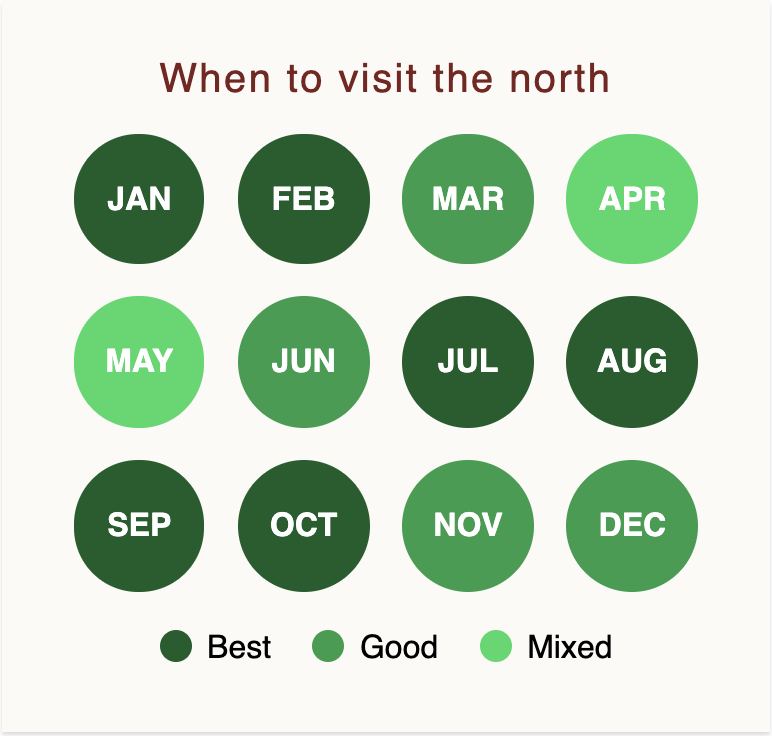Generally, Tanzania is best to visit in the dry-season months of July – October when the parks are dry and wildlife viewing is dramatic, easy, and action-packed.
However, there are pros and cons to every time of year so it is definitely worth calling to discuss. For example, June and October/November are marvelous shoulder season months, where you get amazing wildlife but for a third of the price than in the peak season with special offers and low season rates.
Ngorongoro is amazing year round – it is not very big, and so the animals can’t widely disperse when there is plentiful grass and water. February is the very best time to see the Great Migration as the wildebeest congregate in the southern plains’ during calving season.
The parks of Southern Tanzania are classically dry-season parks so definitely best from July – October. Outside these months, the wildlife can be trickier to find than in Northern Tanzania.
As Ruaha and The Selous are relatively low land compared to northern Tanzania, they are affected a bit more by the rains. The Selous is closed from mid-March to the end of May, as the camps are inaccessible when it has been very wet. Ruaha is also mostly closed at this time of year too.
Both October and November can be very hot in the Selous which is worth noting if you are not a fan of high temperatures.

